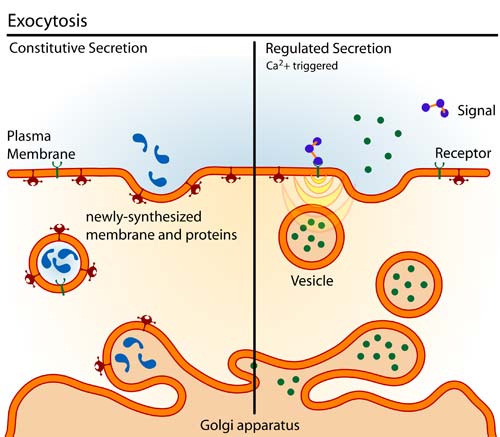exocytosis

Exocytosis the process by which a cell directs secretory vesicles to the cell membrane. These membrane-bound vesicles contain soluble proteins to be secreted to the extracellular environment, as well as membrane proteins and lipids that are sent to become components of the cell membrane.
Exocytosis is the active transport of macromolecules from inside a cell to outside it. Exocytosis involves the packaging of the materials to be exported inside a vesicle, which separates them from the rest of the cell. The vesicle fuses with its specific membrane structure and release its contents before being incorporated back into the cell membrane.
Proteins, for example, that are to be secreted from the cell are made on the rough endoplasmic reticulum (ER). They are then transported to the Golgi apparatus by ER induced vesicles. The Golgi apparatus sorts and packages the proteins into vesicles that separate themselves off and eventually fuse with the cell membrane.
Some molecules are secreted continually from the cell, while others are selectively secreted. To control secretion, specific substances are stored in secretory vesicles, which are released when triggered by an extracellular signal. The signal, which may take the form, for example, of a hormone, binds to its specific cell surface receptor. Then the concentration of free calcium ions (Ca2+) is increased in the cell. This increased concentration of calcium ions triggers exocytosis, causing the secretory vesicles to fuse with the cellular membrane, releasing the substances outside the cell.
The opposite of exocytosis is endocytosis.


